
The start of an eventful weekend began today with the a public guided nature walk with my nature group, the Naked Hermit Crabs (http://nakedhermitcrabs.blogspot.com) at Sentosa. There were about 20 odd participants, both adults and kids, who signed up for the Family Trail and Adventure Trail. Marcus and Helen led the Family Trail group while Ron, Ivan and me led the Adventure Trail group. July had to do the tough work of a seeker (someone who has to find stuff to look at). Despite the tide not receding low enough, we decided to begin the walk with some terrestrial stuff.

I'm sure everyone knows about the Underwater World in Sentosa, but are you aware of the real underwater world behind? This is where it all begins. On the way to the starting point, Ron introduced some of the plants and trees like the Sea Almond tree and Seashore Pandan that grew along the path. Then it was time for the coastal walk.

This group is led by Ivan and seems like they are all looking at something. You bet for there are a lot to see and here goes the list!

Sargassum, a type of brown seaweed.
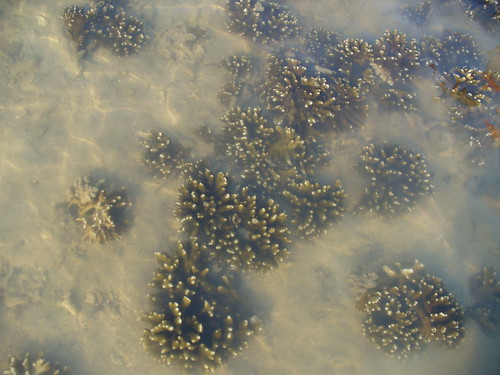
Branching corals, usually in mass.
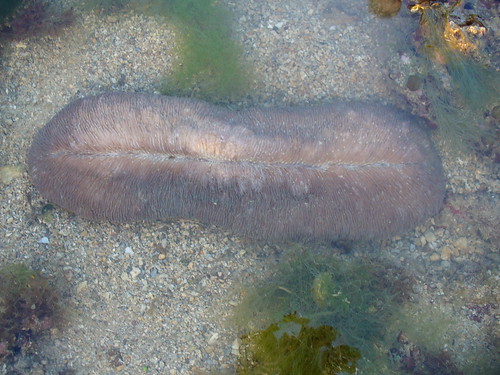
Mushroom coral, free-living species that are not attached to the reef, unlike most other corals.
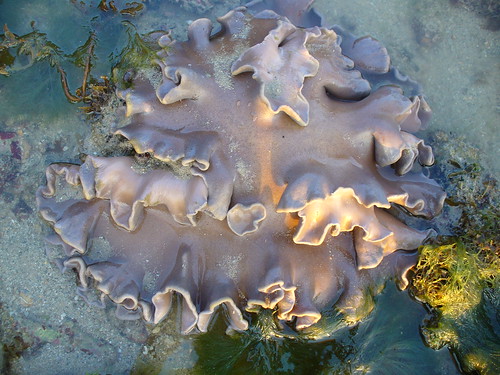
Omelette leathery coral
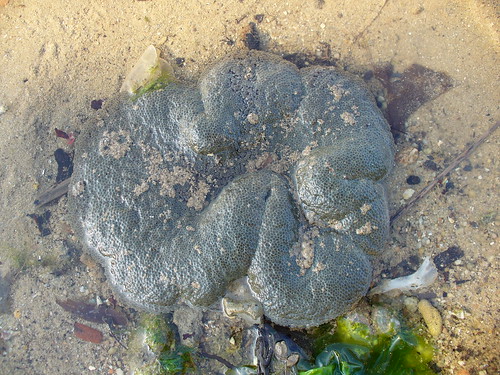
Carpet anemone
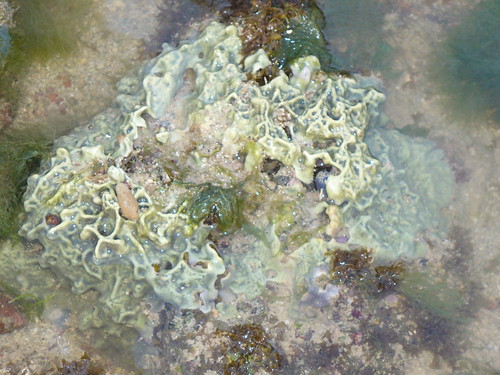
Sponge (Before you start wondering, it's an animal that feeds by filtering the water)
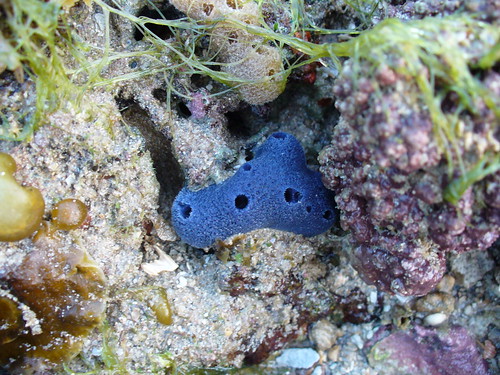
Another sponge, but bright blue in colour, possibly used to ward off possible predators.

Drill, a type of snail which secretes some sort of acid that can soften the shells of clams. They will then slowly drill through and feed on the insides.
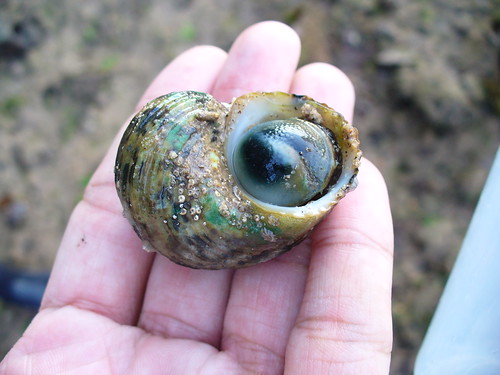
Turban snail, showing the hemi-spherical operculum, which looks like a 'cat's eye'.
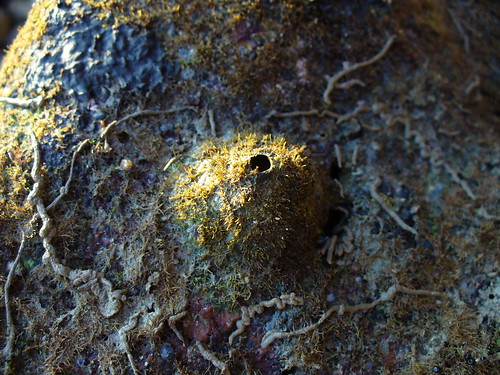
Volcano barnacle. Barnacles are usually hermaphrodites aka both male and female. But instead of self-fertilise, they will mate with neighbouring barnacles. Since they can't move, they have the longest male organ to body size ratio of the animal kingdom so that they can reach far away.
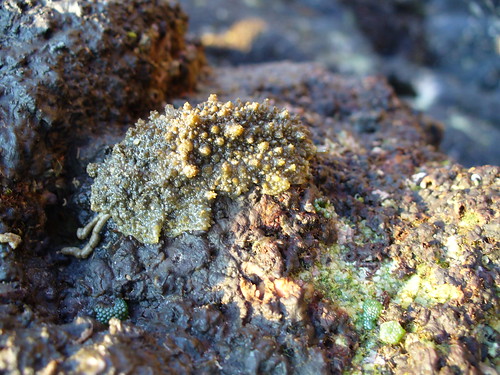
Onchidium, a cute slug which breathes through an opening alongside its anus and always leaves a trail of waste when it moves.
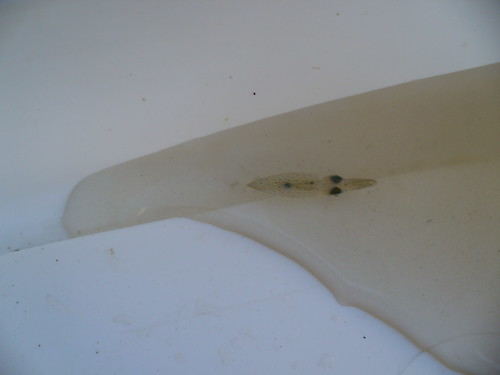
Squid
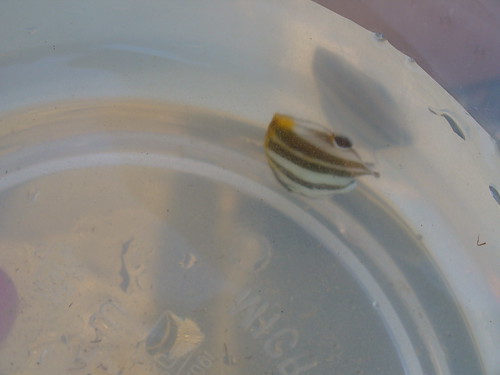
Kite butterfly fish

Black sea cucumber, hiding in a crevice.

Leaf slug which sucks sap of algae and keeps the choroplast in order to photosynthesize to provide itself with extra nutrients. Wonder of Nature eh? If only humans can do that, but then again... we will all be green...

A Nudibranch, meaning 'naked gills' and is derived from the extensions on their body which is used for breathing. Once again, another hermaphrodite.

File fish

Flatworm, hm... a worm that is flat? Not an expert here... Ha...

Hairy crab

Half-time. Now we go landwards a little, exploring the natural caves and admire the pink shade of the cliff which is caused by iron oxide. Here you can see the Raffles Pitcher plant, a 'carnivorous' plant which digest the insects that falls in with the digestive fluid in its 'pitcher'.


Here you see my adventure trail group, the swimming crabs! This was taken in front of a rock formation which clearly had an eroded path. Sandstone being a soft rock was slowly eroded by the water waves, leaving the distinction from the hard granite.
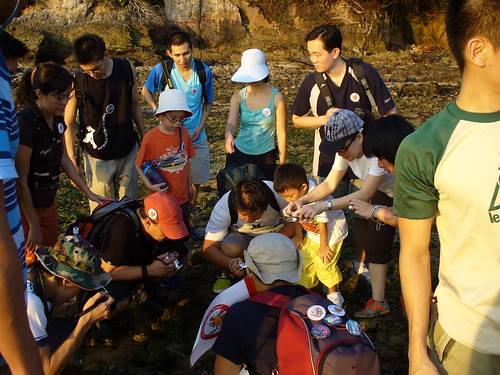
Wondering what's the hustle about? You bet it's something good.

Now you know why? An octopus! More often you see it on your dinner table, but this is a live, wild one. Sure beats seeing a dead one.
Now final round of the nature critters, courtesy of July, Marcus and Helen, all gathered at a spot. Although they were stored in plastic containers, they are only meant for the participants to get a closer look. It's only temporary and all were released shortly after so as to minimise the stress on them. So here goes...
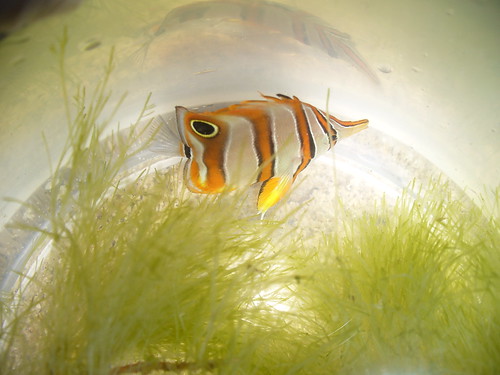
Copper-banded butterfly fish. It sometimes feeds on coral polyps. At the end of its dorsal fin, a large eye-epot may help to confuse would-be predators that the fish is actually some other larger animal or make them aim for the tail instead of the real head.
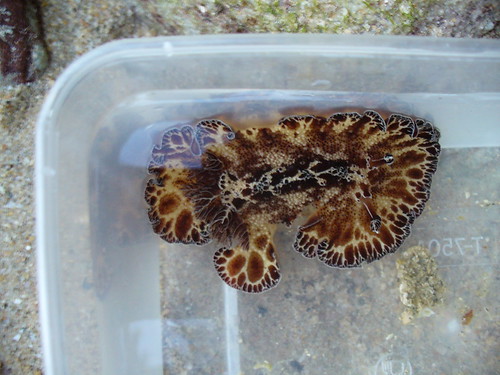
Another nudibranch, commonly termed as Discodoris after its scientific name Discodoris boholensis
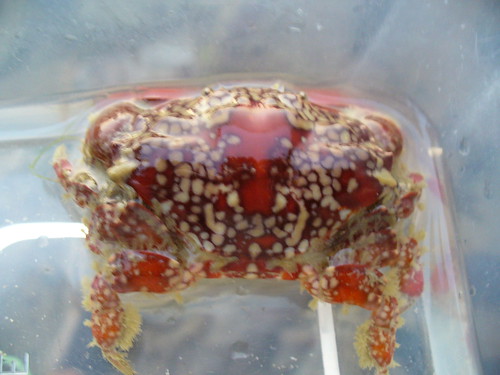
Mosaic crab, the most poisonous crab in Singapore.
Those were the highlights and of course there were more, like another leaf slug, a moulted shell of a brown egg crab, dove lightning snails, blue swimming crab etc. And of course there were so much more that was seen like seagrass, nerite snails etc. When it is best experienced if you visit the place yourself. Visit NHC's website for information of future walks.
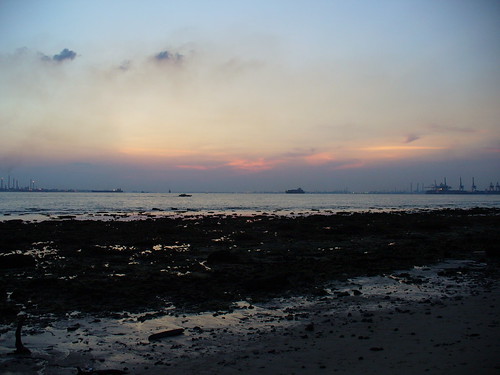
It was a fantastic day and as dusk drew near, sadly we had to call it a day. Nevertheless, all the participants had a feast of what Singapore's shores had to offer and hope that this will continue to promote the awareness of Singapore's very own Nature!

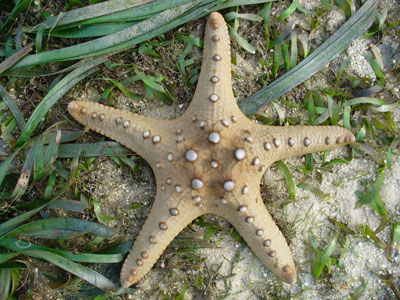




4 comments:
how colourful and beautiful they are!!
Ning
True idea
i surely enjoy your writing taste, very interesting.
don't give up as well as keep writing mainly because it just nicely to read it.
excited to look at much more of your own content pieces, kind regards :)
Wow this is pretty awesome, kind of weird but great and interesting. In fact a friend of mine who recommended me to visit Viagra Online also told me that he went to a beach in which crabs are biggest.
Post a Comment